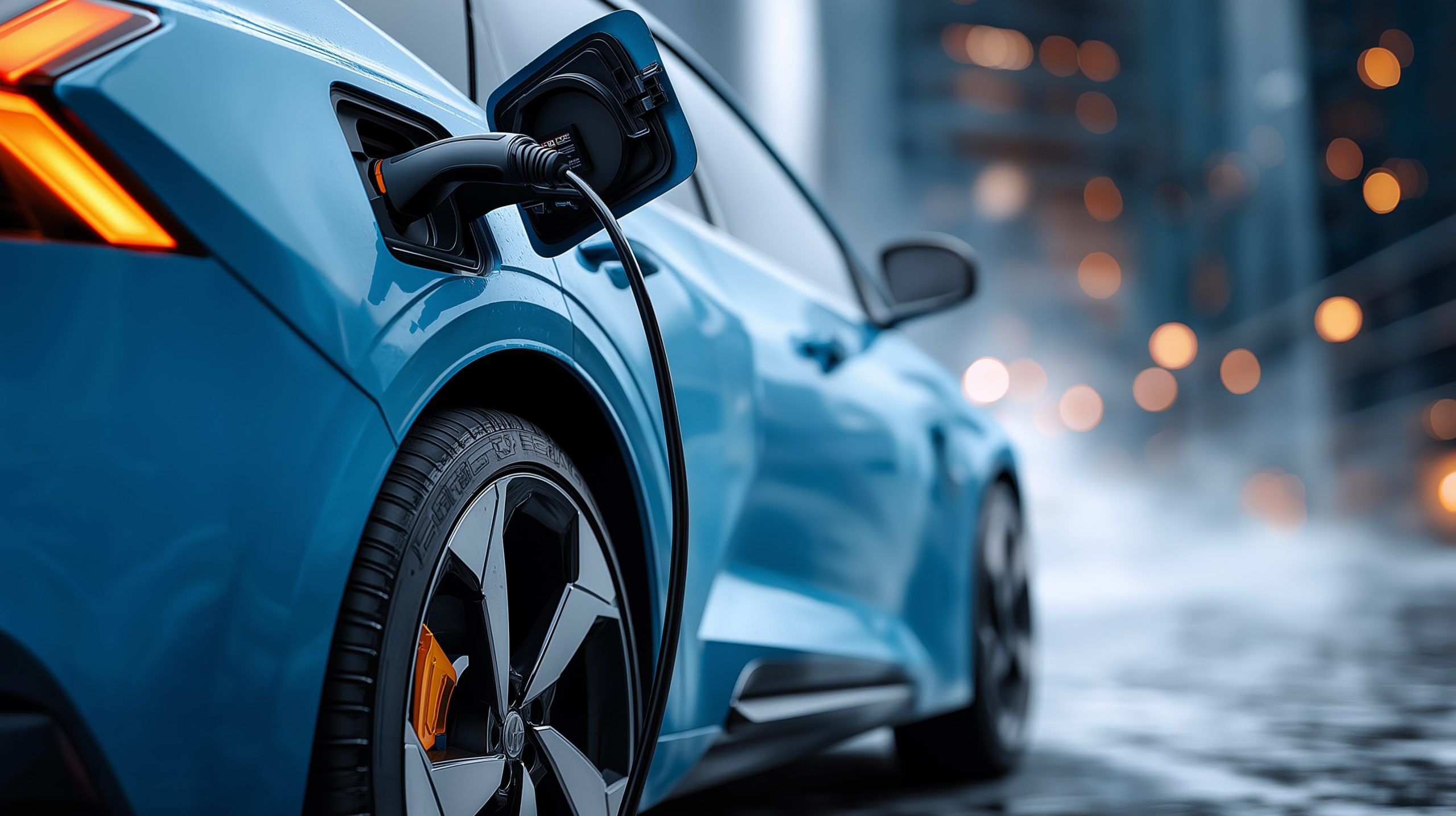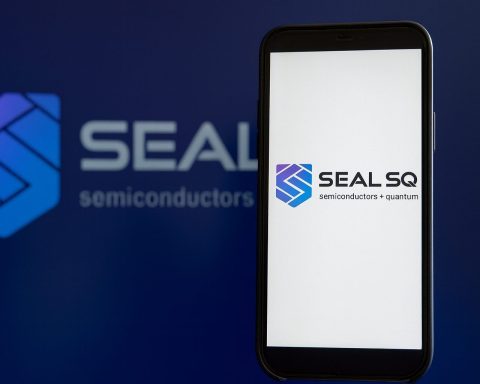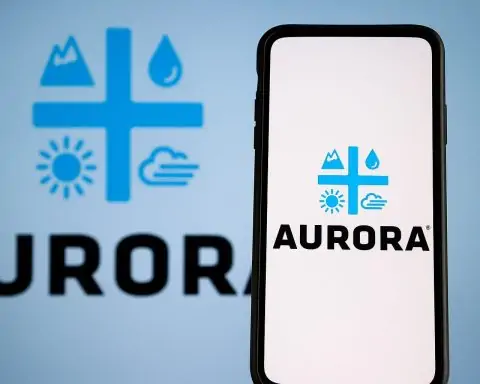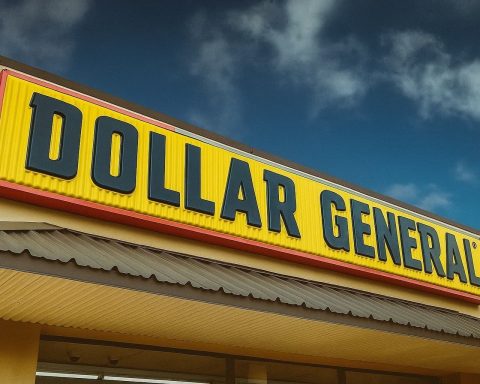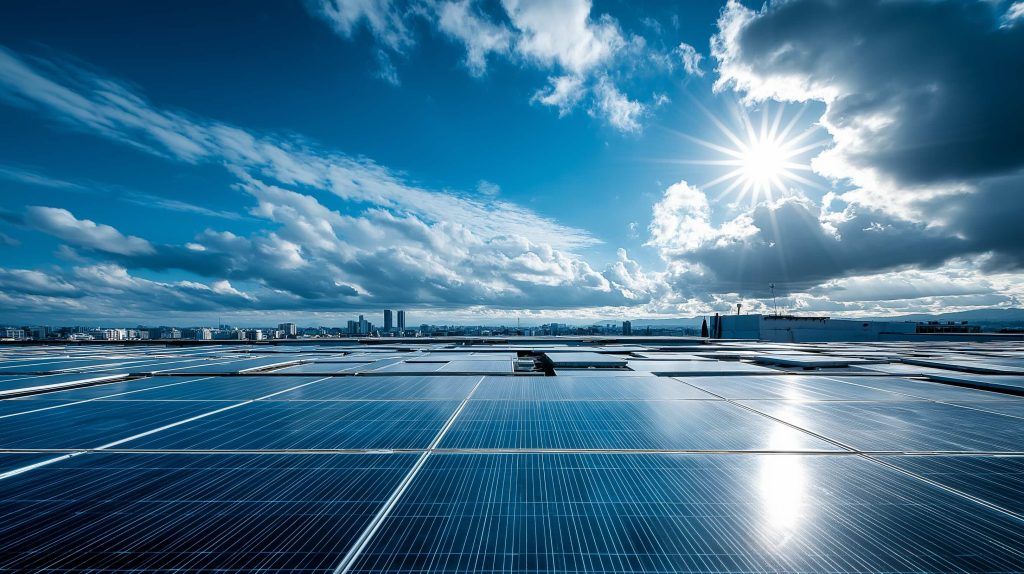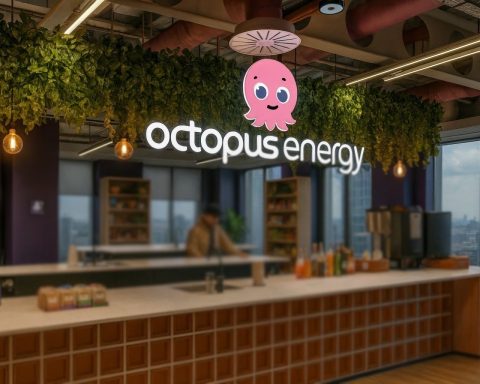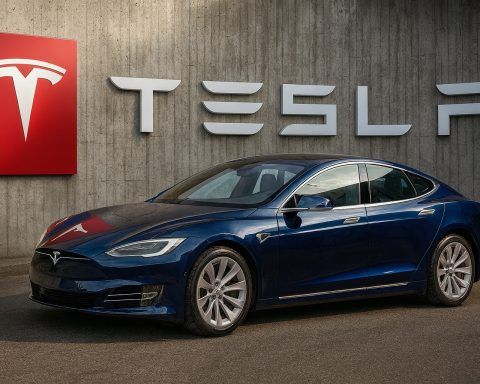- CATL’s Shenxing fast-charge battery can add 520 km of range in 5 minutes on a 1.3 MW charger, enabled by a 12C charging rate.
- CATL’s automotive-grade sodium-ion battery “Naxtra” delivers 175 Wh/kg energy density and 10,000+ cycles, with mass production slated for end-2025, plus safety tests showing no fires under cutting, crushing, or puncturing and cold-weather performance retaining about 90% capacity at -30°C with 30–80% charging in 30 minutes.
- CATL’s “Freevoy” dual-chemistry pack combines two cell chemistries to achieve over 1,500 km (932 miles) of range in testing.
- A lithium-sulfur prototype with a platinum catalyst demonstrated 92% capacity retention after 500 cycles, indicating a major durability milestone for Li-S chemistry.
- Mercedes-Benz will use silicon-anode cells from Sila Nanotechnologies in its upcoming electric G-Class SUV, yielding about a 20% increase in energy density.
- Amprius and Molicel demonstrated a 21700 silicon-anode cell that reportedly can charge from 0 to 100% in 90 seconds under special testing conditions.
- Graphene-based developments include Huawei’s Aito battery enabling 200+ kW fast charging, Graphenano’s graphene-polymer battery claiming 500 miles range with minutes-scale recharge, and graphene-based cooling foils with about 10x higher thermal conductivity than copper.
- Chalmers University researchers created a carbon-fiber structural battery with a carbon-fiber negative and LiFePO4 positive electrode delivering around 20% of Li-ion energy density, as Tesla advances cell-to-chassis concepts with 4680 packs.
- Panasonic opened a 32 GWh/year EV battery plant in Kansas to supply North America, with 2170/4680 cells achieving over 800 Wh/L energy density, and having shipped about 19 billion Li-ion cells with zero recalls by 2025.
- QuantumScape has shown progress toward mass production with 24-layer solid-state prototype cells and a 15-minute fast-charge capability, while VW’s PowerCo invested $131 million in 2025 to build a larger pre-production line and a licensing deal aiming for 40 GWh/year of QuantumScape cells.
Electric vehicles are on the verge of a battery revolution. New innovations are emerging that promise longer driving range, faster charging, improved safety, and lower costs for EVs. This in-depth report examines the current state of EV battery technology and explores the next-generation batteries—from improved lithium-ion chemistries to futuristic concepts like solid-state, sodium-ion, lithium-sulfur, graphene-enhanced, and even structural batteries. We’ll also highlight recent (2024–2025) industry news, quotes from experts and executives, and what major battery players like CATL, Panasonic, BYD, QuantumScape, and Northvolt are doing to power the electric future. By the end, you’ll have a clear picture of how EV battery advancements will impact vehicle range, charging, cost, and environmental sustainability.
Current EV Battery Technologies: Lithium-Ion Dominance
Today’s electric cars are nearly all powered by lithium-ion (Li-ion) batteries, a proven technology first commercialized in the 1990s. Li-ion cells offer a high energy density (packing a lot of energy per weight) and decent lifespan, making them ideal for EVs. Modern EV battery packs can deliver 300-400 miles of range in premium models, and costs have fallen dramatically over the past decade. However, there are several types of lithium-ion chemistries with different trade-offs:
- NMC/NCA batteries (Nickel Manganese Cobalt / Nickel Cobalt Aluminum): These are used in many mid-to-long-range EVs due to their high energy density. The presence of nickel boosts energy content for longer range, but they rely on cobalt, a costly and supply-constrained metal. NMC/NCA cells offer excellent performance but can run hotter and carry a greater risk of thermal runaway (fire) if damaged or improperly managed. Automakers have been reducing cobalt content for cost and sustainability – for example, using high-nickel cathodes with little or no cobalt [1]. These cells provide great range but tend to be more expensive and require robust battery management for safety.
- LFP batteries (Lithium Iron Phosphate): LFP chemistry has made a strong comeback for EVs in recent years. LFP packs have slightly lower energy density than NMC (meaning an LFP pack might be larger/heavier to provide the same range), but they are far cheaper and safer, containing no cobalt or nickel [2]. They are also very long-lasting and much less prone to fire if crushed or shorted [3]. This makes LFP ideal for affordable and standard-range EV models. For instance, Tesla and many Chinese automakers now use LFP batteries in their mass-market cars for cost and durability advantages. A BYD innovation called the “Blade Battery” arranges LFP cells in a space-efficient blade-like module, further improving range and safety (it famously passed nail penetration tests without catching fire) [4] [5]. The main drawback of LFP has been lower range due to energy density, but improvements are coming – CATL (the world’s largest battery maker) even introduced an advanced LFP pack that achieved 4C fast charging in 2023 (charging to 80% in 10-15 minutes) and now a 12C ultra-fast charge version in 2025 [6] [7].
- Older chemistries (NiMH): Some early hybrids (like Toyota Prius) used nickel-metal hydride batteries. NiMH is heavier and less efficient than lithium-ion, and tends to run hot [8]. It has mostly been phased out for new EVs in favor of Li-ion. Nearly all modern pure EVs use lithium-ion as standard.
In summary, lithium-ion technology underpins current EVs, with NMC/NCA cells offering maximum range in high-end models and LFP cells powering an increasing share of mainstream and entry-level EVs due to cost and safety. Automakers often balance the two: for example, using LFP in standard-range versions and NMC in long-range versions of the same car. Battery management software is also crucial – monitoring temperatures and charge levels to prolong life and prevent overheating [9]. While today’s Li-ion batteries are far from perfect (fires, degradation, and reliance on rare metals are concerns), incremental improvements continue. General Motors and LG, for instance, have been developing a new lithium-manganese-rich (LMR) Li-ion cell with 50% fewer parts and 33% higher energy density than current designs [10]. This shows there’s still room to refine lithium-ion batteries even as new technologies are on the horizon.
The Solid-State Battery Promise
One of the most highly anticipated breakthroughs is the solid-state battery (SSB) – often called the “holy grail” of EV batteries. Solid-state batteries replace the liquid electrolyte found in conventional Li-ion cells with a solid electrolyte (made of ceramic, glass, or polymer). They can also use a lithium metal anode instead of a graphite anode. These changes promise multiple benefits: higher energy density, faster charging, and improved safety [11]. Without flammable liquid electrolytes, the risk of fire is greatly reduced, and a lithium-metal anode can store much more energy than graphite, potentially boosting driving range by 50–100% [12].
Major companies and startups have invested heavily in solid-state R&D. Toyota made headlines by claiming a significant breakthrough in solid-state tech. Keiji Kaita, president of Toyota’s R&D center for carbon neutrality, said they have simplified production of solid-state battery materials and aim to halve the weight, size, and cost of batteries [13]. “For both our liquid and our solid-state batteries, we are aiming to drastically change the situation where current batteries are too big, heavy and expensive,” Kaita explained. “In terms of potential, we will aim to halve all of these factors.” [14] Toyota believes these advances could enable a 1,200 km (745 mile) range battery that charges in 10 minutes or less, possibly by 2027 [15]. An outside expert, Professor David Bailey of the University of Birmingham, noted that if Toyota’s claims pan out, “it could be a landmark moment…very much the holy grail of battery vehicles” [16].
Beyond Toyota, several startups are racing to commercialize solid-state cells. QuantumScape, backed by Volkswagen and Bill Gates, has developed an “anode-free” lithium-metal design with a proprietary ceramic separator. QuantumScape’s cells achieved an 80% charge in 15 minutes in lab tests and could endure hundreds of thousands of miles, even at cold temperatures [17]. Nobel laureate Stanley Whittingham (a co-inventor of Li-ion batteries) reviewed QuantumScape’s early data and remarked the technology could increase energy density by “50% if not 100%… This will be a breakthrough for electric vehicles…I have not seen data this good anywhere else” [18]. QuantumScape is now building a pilot production line and has a partnership with VW’s battery division (PowerCo) targeting mass-production mid-decade [19] [20]. Other players like Solid Power (backed by BMW and Ford) and Samsung are also developing solid-state prototypes [21].
Challenges: Despite the excitement, solid-state batteries are not yet in commercial EVs. Manufacturing at scale is difficult – solid electrolytes can be brittle or have interface issues, and achieving long cycle life with lithium metal has been hard due to dendrite formation. Costs are initially high as well. Toyota acknowledged that scaling the prototype to production is the next big hurdle [22]. QuantumScape has reported steady progress (increasing layer counts of their cells) but still faces years of development for automotive qualification. Industry watchers expect the first solid-state batteries might appear in limited-use cases (like hybrid vehicles or consumer electronics) around 2025-2026, with broader EV adoption later in the decade once durability, yield, and cost targets are met. Nevertheless, automakers are pouring investment into SSB because the payoff – EVs with double the range, 10-minute charging, and minimal fire risk – would be transformative. As InsideEVs notes, companies believe solid-state tech can unlock “far more range, faster charging speeds… and better fire safety” than today’s batteries [23]. In short, solid-state batteries are on the way, but the timing of the revolution depends on overcoming engineering challenges in the next few years.
Silicon-Anode Batteries: More Power and Energy
Another innovation that will arrive even sooner is the use of silicon anodes in lithium batteries. In current Li-ion cells, the anode (negative electrode) is mostly graphite. Silicon can hold much more lithium than graphite—giving it about 10× the theoretical capacity. Replacing a portion of the graphite with silicon in the anode can thus boost a battery’s energy density and also its charging speed. Many EV battery makers are now incorporating silicon, to different degrees, to create high-performance cells.
The big advantage of silicon-enhanced batteries isn’t just higher energy – it’s higher power capability. As InsideEVs reports, high-silicon anodes allow faster charge and discharge: “it’s much greater power…faster charge speeds and higher power to the wheels for a given battery pack size.” [24] EVs could charge quicker and accelerate harder with silicon-rich cells. For example, Amprius and Molicel have demonstrated cells with ~20% higher energy and significantly higher charging rates than standard cells [25] [26]. One industry CEO even claimed a new prototype 21700 cell could charge 0–100% in 90 seconds (albeit under special conditions) using advanced silicon anode material [27] – an extreme example of what high-rate charging silicon might enable in the future.
Several companies are close to deploying silicon-anode batteries in EVs. Mercedes-Benz will use silicon-anode cells from Sila Nanotechnologies in its upcoming electric G-Class SUV, gaining an expected ~20% increase in energy density [28]. Startup Group14 Technologies is partnering with battery makers to supply a silicon-carbon powder that can drop into existing factories. In fact, Group14 and others are building large plants to mass-produce silicon anode materials by 2025 [29] [30]. Even Tesla’s newest 4680 cells reportedly use a small percentage of silicon in the anode to improve performance. The main challenge with silicon is that it swells ~3x in volume when charged, which can crack the anode and cause rapid degradation. To address this, companies use nanostructured silicon or silicon oxide blends and limit the fraction of silicon in the anode (today often 5-15% of the anode). Early silicon-infused batteries (like Tesla’s) balanced performance and lifespan carefully. But as materials improve, we’re seeing batteries with 50% or more silicon in the anode entering the market.
Expect to see silicon-anode batteries in EVs before solid-state batteries. They represent a more incremental upgrade to existing Li-ion designs, so they’re easier to adopt. By 2024–2025, high-silicon cells with notable range and charging improvements will equip select high-end vehicles. Over time, as costs come down, silicon could be a standard additive to most EV batteries, providing that extra boost in performance. Just don’t be surprised if your EV’s spec sheet soon touts a “silicon battery” – it’s the real deal, but as one InsideEVs writer noted, early versions may emphasize fast charging more than huge range gains [31] [32]. Still, even a 10-20% range increase is valuable, and combining silicon anodes with other advances (better cathodes, etc.) can compound the benefits.
Sodium-Ion Batteries: A Cheaper Alternative
Lithium isn’t the only game in town. Sodium-ion (Na-ion) batteries are emerging as a promising alternative for certain EV segments and stationary storage. Sodium is chemically similar to lithium (both are alkali metals that can shuttle ions), but sodium is far more abundant and inexpensive. It can be obtained from common salt. Sodium-ion batteries don’t use lithium or cobalt at all, which means lower raw material cost and less supply chain risk. The trade-off: sodium-ion cells generally have lower energy density than lithium-ion, so they weigh more for the same charge. For that reason, Na-ion batteries are not expected to replace Li-ion in long-range, high-performance EVs soon. However, they could be ideal for lower-cost, short-range EVs and applications like urban cars, fleet vehicles, or energy storage systems – where cost and safety might trump sheer energy density.
Recent developments suggest sodium-ion technology is maturing rapidly. Chinese battery giant CATL unveiled an EV-grade sodium-ion battery scheduled for mass production by late 2025, claiming the highest energy density in the industry at 175 Wh/kg [33] [34]. That is on par with some LFP lithium batteries, enabling practical driving ranges beyond 300 miles (500 km) in small electric cars [35]. Impressively, CATL says their sodium battery can fast-charge at 5C (to 80% in 15 minutes or less) and lasts 10,000+ cycles, equating to decades of use [36] [37]. Perhaps its biggest selling point is safety: in rigorous tests – crushing, nail punctures, drilling – the sodium-ion cells did not catch fire or explode, outperforming traditional lithium cells in abuse tolerance [38] [39]. CATL also notes that sodium-ion batteries excel in cold weather. While lithium EV batteries lose significant range in subzero temperatures, CATL’s sodium cells retained around 90% capacity even at -30°C and could charge from 30% to 80% in 30 minutes at that extreme cold [40]. This could make them attractive in cold climates.
Another Chinese leader, BYD, is also investing heavily in sodium-ion. In January 2024, BYD (the world’s #2 battery producer and EV maker) broke ground on its first dedicated sodium-ion battery factory – a 30 GWh plant aimed at making affordable battery packs [41]. BYD formed a joint venture (FinDreams) to become the world’s largest supplier of sodium battery systems [42]. Their motivation is clear: sodium can cut material cost by ~30% versus lithium packs, and BYD sees sodium batteries as “a low-cost solution that promotes the popularization of mass electric vehicles,” according to Xia Shunli, chairman of a new EV brand deploying the tech [43]. In fact, the very first sodium-ion EV is launching in China: JAC’s Yiwei brand (backed by VW in China) rolled out a small electric car using sodium-ion batteries in early 2024 [44]. Likewise, Chery Automotive announced its upcoming models will use CATL’s sodium packs as well [45]. These will likely be entry-level vehicles where a ~10-20% shorter range is acceptable in return for cost savings and cold-weather reliability.
The downsides of sodium-ion include that lower energy density (so EVs might need larger packs to go the same distance) and the fact that this is a new supply chain (ramping up production will take time, and early costs might be higher until economies of scale kick in). Additionally, sodium-ion cells typically operate at a slightly lower voltage than Li-ion, which can affect efficiency. But ongoing R&D is improving these aspects. For example, CATL’s latest Na-ion cells reached 4.3V, close to lithium cell voltages, which helps narrow the performance gap [46]. Also, sodium-ion batteries tend to be very safe and stable, which can allow manufacturers to pack cells more densely with less cooling and protective overhead. That could offset some energy density differences at the pack level.
Outlook: Expect sodium-ion batteries to start appearing in budget EV models in China by 2025–2026, potentially spreading globally afterward. They won’t replace lithium in high-end cars soon, but they don’t have to — even capturing the low-end EV and massive stationary storage markets would be a big success. By taking pressure off lithium supply (every EV that uses a sodium pack frees up lithium for other uses), sodium batteries can indirectly help all EVs become cheaper and more available. As one commenter noted, even those who never buy a sodium battery car may benefit from “the lower cost and higher availability of lithium” that result [47]. It’s a complementary technology that plays to its strengths: cheap, safe, and durable. If your future EV has somewhat limited range but an ultra-budget price and charges in 10 minutes, it just might be rocking a sodium-ion heart.
Lithium-Sulfur: Ultra-High Energy (With Ultra-High Hurdles)
Among “next-gen” chemistries, lithium-sulfur (Li-S) batteries are often cited for their tantalizing potential. In a lithium-sulfur cell, the cathode is made of sulfur (a cheap byproduct from the petroleum industry), and the anode is lithium metal. Sulfur is extremely lightweight and can store energy-rich compounds when combined with lithium. The theoretical energy density of Li-S batteries is far higher than Li-ion – potentially 500-700 Wh/kg, which could translate to EVs with twice the range of today’s best, or smartphones lasting days. Additionally, sulfur is abundant, inexpensive, and non-toxic, so material costs would be low and supply secure [48]. A lithium-sulfur EV battery could dramatically reduce weight (improving efficiency) and cost, all while delivering long range.
However, the reason you can’t buy a Li-S battery car today is that sulfur batteries have critical longevity problems. The very chemistry that gives Li-S such high energy also causes the cell to fail very quickly. In discharge/charge cycles, sulfur converts to various intermediate compounds (lithium polysulfides) that tend to dissolve into the electrolyte and shuttle to the lithium anode, where they wreak havoc. This leads to a buildup of insulating deposits, rapid capacity loss, and a battery that can die after dozens of cycles – essentially unusable after maybe 50 full charges in early experiments [49]. In other words, you might get incredible range on day 1, but the battery would degrade to uselessness within weeks of use. This “polysulfide shuttle” and the instability of the lithium metal anode have been intractable issues for years.
The good news is that researchers are steadily finding ways to mitigate these problems, inching Li-S closer to viability. A recent breakthrough from Florida International University demonstrated a catalyst that greatly extends Li-S battery life. By adding tiny nanoparticles of platinum to the sulfur cathode, the team was able to guide the chemical reactions and prevent the usual buildup on the anode [50] [51]. The result: their lithium-sulfur prototype retained 92% of its capacity after 500 cycles, a massive improvement from the near total failure after 50 cycles in earlier tests [52] [53]. “We achieved a 92% retention after 500 charging cycles, which means the battery is nearly as good as new,” said Dr. Aqsa Nazir, the lead author of the study, noting that the catalyst “minimized the negative reactions that hurt overall performance to bring this battery to the commercial level.” [54] This kind of lifespan (500+ cycles) is still short of mainstream EV standards, but it’s a milestone suggesting that clever engineering (like electrocatalysts or special electrode structures) can tame the Li-S chemistry.
Companies are also pursuing Li-S for niche applications where its high energy density is valuable enough to tolerate a shorter life. For example, aviation startups are interested in Li-S batteries for electric aircraft, where weight is at a premium and you might trade cycle life for longer flights. Monash University in Australia developed a fast-charging Li-S battery aimed at long-haul drones and possibly e-aviation [55]. European and U.S. firms (Oxis Energy, Lyten, Zeta Energy) have been working on commercializing lithium-sulfur cells, with some targeting early markets like satellites or military drones. Notably, in 2023 Stellantis (the automaker conglomerate) partnered with startup Zeta Energy to develop Li-S EV batteries with “game-changing” energy density, hoping to leapfrog current tech [56]. And in 2025, U.S.-based Lyten announced the acquisition of a large European battery facility, indicating plans to scale up Lyten’s own lithium-sulfur technology for EVs and energy storage [57].
Despite this progress, lithium-sulfur is still in the experimental stage relative to EV deployment. The next steps involve improving the cycle life further (into the thousands of cycles), optimizing the cell design for high power output (sulfur can have low conductivity, which may limit quick bursts or fast charging without additives), and solving manufacturing issues (sulfur is cheap, but integrating lithium-metal anodes and new electrolytes in mass production is non-trivial). If those hurdles are cleared, Li-S batteries could offer a huge leap in EV range and a reduction in battery pack weight by 30-40%. No more range anxiety – possibly 1,000+ km (600+ miles) on a single charge could be achievable. But realistic timelines put Li-S EV batteries in the late 2020s or 2030s. In the meantime, their development continues in labs and pilot lines. It’s a moonshot that could pay off big. As one engineer quipped about EV range: “We’ve ended range anxiety forever” if lithium-sulfur and other breakthroughs pan out (though ensuring that longevity and safety catch up is key) [58].
Graphene and Novel Materials: Hype or Hope?
The word “graphene” often comes up in discussions of future batteries. Graphene is a one-atom-thick sheet of carbon atoms with remarkable properties – extremely high electrical conductivity, huge surface area, and great mechanical strength. Researchers and startups have explored using graphene in batteries either as an additive (to improve conductivity and thermal behavior of electrodes) or even as the primary material in supercapacitor-like cells. The promise is that graphene-based batteries could charge in minutes, deliver high power, and last for many cycles. Some even tout both high power and high energy density by leveraging graphene structures.
So far, graphene in EV batteries remains largely in the prototype and early product stage, but a few companies have made bold claims. Graphenano, a company in Spain, is developing a graphene-polymer battery that it says will provide 500 miles of range and recharge in just a few minutes [59]. According to GreenCars, Graphenano claims their graphene battery can charge and discharge 33 times faster than conventional Li-ion cells [60]. If true, that implies charging an EV in a time closer to filling a gas tank. Another startup, Skeleton Technologies, uses “curved graphene” in ultracapacitors that can charge in seconds; they are working on merging that tech into EV batteries for rapid charging and boosting. We should take some of these claims with a grain of salt – graphene has been hyped for years, and integrating it into batteries at scale is challenging. However, real progress is being made in related areas. For instance, researchers developed graphene-based foils for battery cooling that have 10× higher thermal conductivity than copper, which can greatly improve safety and fast-charge capability by quickly dissipating heat [61]. Graphene-enhanced anodes (like graphene-silicon composites) are also being tested to improve cycle life when silicon is added.
In essence, graphene could play a supporting role in improving EV batteries: making electrodes more conductive and resilient, thus enabling faster charging and higher power output. We may not see a miraculous “graphene battery” that multiplies range overnight, but we might see graphene-enhanced Li-ion batteries in the coming years that incrementally improve performance. For example, graphene additives in cathodes or anodes might allow 5–10% more capacity or much faster charging without damage. One real-world product is Huawei’s new EV battery for its Aito cars in China, which reportedly uses some graphene to achieve 200+ kW fast charging. Similarly, supercapacitors that use graphene could supplement batteries in EVs – providing quick bursts of power or regenerative braking energy capture that batteries alone struggle with.
To the general consumer, many graphene battery claims are marketing hype right now. But the underlying science is sound that better nanomaterials like graphene, carbon nanotubes, etc., will gradually find their way into batteries. The future EV battery might be part chemical, part nano-engineered structure. As those GreenCars examples illustrate, everything from carbon nanotube electrodes promising 10× power [62] to sand-based silicon and even seawater-derived ingredients [63] are under exploration. Graphene stands out among these for its versatility. In summary: graphene is not magic, but it’s a very useful material that could enable faster-charging, longer-lasting EV batteries when used intelligently. Keep an eye out for “graphene-enhanced” cells as a selling point in the late 2020s – they may not give 500 miles in 5 minutes by themselves, but combined with other advances, they’ll contribute to big improvements.
Structural Batteries: When the Car Is the Battery
Imagine if the car’s frame and body panels could store energy like a battery, instead of carrying a heavy battery pack within. That’s the concept of structural batteries – making the vehicle’s structure itself serve double-duty as energy storage. This idea could radically reduce weight and increase space in EVs, since you wouldn’t need a separate large battery pack; the car’s chassis would essentially be the battery. It’s a futuristic concept, but early research is making headway.
One notable effort is at Chalmers University of Technology in Sweden, where scientists created a carbon-fiber based structural battery material. They used carbon fiber as the negative electrode and a lithium iron phosphate positive electrode, embedded in a rigid composite that can carry load [64]. In tests, these materials were extremely stiff (as needed for a car body) while storing some electrical energy. A structural battery like this essentially turns parts of the car (floor pan, panels, etc.) into a big, low-energy battery. Currently, such batteries have much lower capacity than conventional packs – the first Chalmers prototype had about 20% of the energy density of Li-ion. But even at that level, because it eliminates separate battery weight, an EV could potentially achieve comparable range with a far lighter overall system. The researchers see a path to improve the energy density at least 2–3×, which could make structural batteries quite viable for use in car frames in the future.
Automakers are also exploring this idea in a more near-term way. Tesla introduced a structural battery pack in its latest Model Y and Model 3 designs: the 4680 battery cells are glued together and to the car’s underbody, forming a rigid structural element of the chassis. In Tesla’s case, the cells still sit in a module, but that module replaces traditional chassis parts (so it’s a hybrid approach – the battery pack is the floor structure of the car). This design saved weight and improved manufacturing simplicity. General Motors and others have spoken about “cell-to-chassis” integration too. These are stepping stones toward true structural batteries.
The full vision of structural batteries would use new materials where every fiber or panel holds charge. That might mean, for example, the car’s roof, hood, or door panels provide some power. Benefits include massive weight reduction (no redundant structures) and possibly improved safety (distributed energy storage could be less volatile than one big pack). But there are challenges: structural batteries likely have to compromise between mechanical strength and battery performance. Also, any damage to the car’s body could mean damage to its battery function, raising questions about repair and safety in crashes. If the “fuel tank” is also the frame, accidents and wear-and-tear become more complicated issues.
Nevertheless, progress is ongoing. In 2021, a team at Volvo and Lamborghini experimented with a carbon-fiber structural battery for a sports car body, and companies like Bollore have concept cars with structural battery bodywork. There’s also interest in using carbon fiber itself as a battery electrode, essentially giving carbon fiber components a dual purpose. Even if structural batteries initially only provide a portion of the total energy (supplementing a smaller main battery), that still could extend range or allow lighter designs.
In summary, structural batteries are an exciting frontier, bridging materials science and electrochemistry. They likely won’t appear in consumer EVs for some years, aside from the quasi-structural packs already emerging. But the research today is laying the groundwork. One day, “filling up” your car might literally mean charging your car’s frame. As one research project showed, a car body can be “extremely stiff and rigid” while functioning as a battery, pointing to a future where body parts are the batteries [65]. It’s an innovative way to improve efficiency – after all, if every part of an EV can carry some charge, you maximize utilization of weight. The long-term vision is lighter EVs with much greater range, thanks to every carbon fiber and panel pulling double duty.
Major Players and Recent Battery Breakthroughs (2024–2025)
The EV battery landscape is shaped by a mix of industrial giants and tech startups. Let’s highlight some major players and what they’ve been up to in 2024–2025:
- CATL (Contemporary Amperex Technology Co. Ltd.): The undisputed global leader in EV batteries (supplying ~35% of the world’s EV cells) is a Chinese company known for relentless innovation. In 2025, CATL wowed the industry at its Tech Day by unveiling three major technologies: an ultra-fast charging LFP battery, a sodium-ion battery, and a “dual chemistry” super-range pack. The second-generation Shenxing fast-charge battery can add 520 km of range in just 5 minutes on a 1.3 MW charger, thanks to a 12C charging rate [66] [67]. This outpaced BYD’s own recent 10C (1 MW) charging battery that added 400 km in 5 minutes [68] [69]. CATL also announced the first automotive-grade sodium-ion battery (Naxtra), slated for mass production by end of 2025, with 175 Wh/kg energy density, 10,000+ cycle life, and remarkable safety (withstood cutting, crushing, and puncturing with no fires) [70] [71]. To address range anxiety at the high end, CATL revealed Freevoy, a “dual power” battery pack that combines two different cell chemistries in one pack (one optimized for power, one for energy). This dual battery system achieved over 1500 km (932 miles) on a single charge in testing [72] [73]. “By combining two distinct battery technologies in one package, we’re able to optimize both high-power performance and extended range,” a CATL spokesperson explained of this approach [74]. In short, CATL is pushing on all fronts: faster charging, new chemistries, and longer range. The company’s innovations often rapidly make it into production – e.g. CATL’s Qilin battery pack (with 72% space utilization and cooling breakthroughs) is already enabling consumer EVs like the Zeekr 001 to achieve 1,000 km range on China’s test cycle. CATL’s dominant position and aggressive R&D ensure it will remain a key driving force in battery tech advancements.
- BYD: A Chinese automaker and battery maker, BYD is CATL’s chief rival and was the first to commercialize LFP batteries in modern EVs at large scale. BYD’s signature Blade Battery (LFP chemistry) is known for its safety – in one demo a Blade cell was pierced with a nail without thermal runaway, a claim few other batteries could make at the time [75]. BYD uses these batteries in its own EV lineup (now one of the world’s largest, recently surpassing Tesla in overall EV sales [76]) and even supplies them to others (Toyota, for example). In 2023–2024, BYD has been working on its next-gen Blade Battery with higher energy density (reports suggest ~10-20% improvement, possibly by using some lithium manganese iron phosphate chemistry or other tweaks) and faster charging capability (~10C). Indeed, BYD quietly announced a new cell that can charge from 30-80% in 10 minutes (roughly 400 km in 5 minutes), which CATL promptly topped as noted above [77]. Not to be left behind in new chemistries, BYD is heavily investing in sodium-ion as well: it formed a JV (FinDreams) and began building the world’s first large Na-ion battery plant (30 GWh) in Xuzhou, aiming to lead in this technology [78] [79]. BYD’s philosophy is to cover all segments – LFP for mainstream, sodium for ultra-low cost, and they even still use NMC in some performance models. BYD’s massive scale (it produces everything from battery cells to electric buses) and innovations like integrated motor-battery designs keep it at the forefront. Their focus on battery safety and cost has really paid off, making EVs more affordable. We can expect BYD to continue refining LFP (their so-called “Gen 2” Blade) and bringing sodium-ion batteries to market in entry-level EVs within the next year or two.
- Panasonic: This Japanese company was Tesla’s original battery partner and remains a major cell supplier, particularly of high-energy cylindrical cells. Panasonic is known for top-quality and has historically focused on NCA chemistry cells for Tesla. In 2025, Panasonic opened one of the world’s largest EV battery plants in Kansas (32 GWh/year) to supply Tesla and other clients in North America [80]. Panasonic’s latest 2170 and upcoming 4680 cylindrical cells boast industry-leading energy density of over 800 Wh/L (volumetric) [81] – achieved through improvements in electrode design and chemistry (high nickel cathodes, etc.). These dense cells enable vehicles like the Tesla Model S and Lucid Air to pack more kWh in the same space. Panasonic also prides itself on reliability: by 2025 they had shipped 19 billion Li-ion EV cells globally with zero recalls due to battery defects, reflecting strong safety and quality control [82]. In terms of innovation, Panasonic is working on techniques to increase energy density further (like silicon anodes and advanced cathode coatings) and on the 4680 large-format cells (jointly with Tesla). The company is a bit more conservative than some startups – you won’t hear wild claims from Panasonic – but they consistently deliver gradual improvements. They have also begun research on solid-state batteries, though their timeline is towards the late 2020s for commercialization. Panasonic’s role in the industry is as a trusted incumbent pushing the envelope on known tech and scaling up production in new regions (like the US) to meet surging EV demand.
- QuantumScape: Unlike the big industrial firms above, QuantumScape is a Silicon Valley startup (albeit one valued in the billions) singularly focused on solid-state batteries. It has quickly become one of the most watched companies in the battery world. QuantumScape’s approach uses a ceramic solid electrolyte separator and a lithium-metal anode that forms in situ. Their 2024 updates showed steady technical progress: they integrated a new high-speed “Cobra” separator manufacturing process into their pilot line, which is key to making solid-state cells at scale [83]. They delivered prototype 24-layer cells and are gearing up for B-sample production in 2025. Volkswagen’s battery arm, PowerCo, has been so encouraged that it boosted investment by $131 million in 2025 to help QS build a larger pre-production line [84]. Under a licensing deal, VW expects to produce 40 GWh/year of QuantumScape’s cells in the future [85]. QuantumScape also announced a new joint development agreement with another (unnamed) major automaker in 2025, signaling broader interest [86]. CEO Jagdeep Singh often reiterates their goal of bringing lithium-metal batteries to market “as soon as possible” [87], and the company has set 2025–2026 as a target for delivering cells to automakers for testing in vehicles. While still pre-revenue, QuantumScape’s technology has attracted top talent and money (Bill Gates and JV with VW since 2012) and is seen as one of the front-runners in the solid-state race. Its successful milestones—like achieving 15-minute fast charge and excellent cycle life in multi-layer cells—have been cited by experts as breakthroughs. If QuantumScape can hit its next milestones, we might see limited solid-state batteries in high-end VW group vehicles in a few years, with broader production later. They represent the cutting-edge of the “startup” side of battery innovation, complementing the big companies’ efforts.
- Northvolt: This European startup was founded with the ambition to build a “gigafactory” in Sweden and supply Europe’s carmakers with home-grown batteries, challenging the Asian dominance. Northvolt achieved notable milestones in 2021–2022, delivering its first cells and securing big contracts (Volkswagen, BMW). They also emphasized sustainable production – running factories on clean energy and planning recycling from the start. By 2024, Northvolt was expanding to multiple sites and even exploring advanced chemistries (they had projects on lithium-metal and sodium-ion in their labs) [88]. However, the past year has been tumultuous for Northvolt. Rapid expansion, high costs, and delays led to a financial crunch. In late 2024, Northvolt had to halt some plans and underwent a strategic review [89]. Reports emerged that the company was seeking new investment and even selling off non-core parts. According to public filings, Northvolt filed for bankruptcy in late 2024/early 2025 as it restructured its operations [90]. This was a surprising setback – noted as the largest industrial bankruptcy in Sweden’s modern history [91]. Essentially, Northvolt overextended while trying to ramp up its Ett gigafactory and simultaneously start new projects in Germany and elsewhere. They have since refocused on getting their main Swedish plant to full production (16 GWh) by 2026 and paused other ventures [92]. Northvolt’s situation is a cautionary tale: making batteries at scale is hard, capital-intensive, and not every ambitious startup will succeed, even with experienced founders. That said, Northvolt still has valuable tech and partnerships (VW, for instance, is involved in their Salzgitter plant in Germany, which might proceed under VW). Interestingly, parts of Northvolt’s technology (like a subsidiary working on lithium-sulfur batteries) were acquired by other firms such as Lyten [93], so the innovations may live on. Europe’s battery dreams took a hit with Northvolt’s struggles, but other projects (like Asian companies building EU plants, and startups like Britishvolt – which also faced issues – being replaced by new efforts) continue. Northvolt’s rise and stumble highlight both the promise and peril in the battery boom.
These players (along with others like LG Energy Solution, SK On, Samsung SDI, and newcomers like China’s CALB or America’s Our Next Energy) are driving the technology and scaling needed for the EV revolution. Each has a different focus – from CATL’s all-of-the-above approach to QuantumScape’s singular pursuit of solid-state – but together they push the envelope. Notably, collaboration is common: carmakers often partner with several battery makers to hedge bets (e.g., Ford with SK On for LFP and Solid Power for solid-state). This ecosystem of competition + collaboration accelerates progress. Major recent trends across the industry include: rapid expansion of production capacity (dozens of gigafactories being built worldwide), a shift toward localized production (due to incentives like the U.S. IRA and Europe’s push for local supply), and intense R&D into alternatives to cobalt and nickel (both to cut costs and avoid supply risks). The period of 2024–2025 has seen a flurry of announcements about new battery plants, breakthroughs, and even government funding for battery research, reflecting the strategic importance of battery tech in the global economy.
Advantages, Challenges, and Impacts of New Battery Technologies
With so many battery technologies evolving, it’s worth comparing their advantages, challenges, and implications for EVs:
- Energy Density and Range: Advances like solid-state, high-silicon, and lithium-sulfur aim to increase energy density, which directly boosts EV range. A solid-state or Li-S battery could allow future EVs to routinely exceed 500–600 miles on a charge, eliminating range anxiety. Even improvements to Li-ion (e.g., new cathodes or adding silicon) are yielding 10–30% range gains in the near term. However, higher energy density can come with trade-offs – sometimes high-energy chemistries are less power-capable or have shorter cycle life initially. There’s also a point of diminishing returns for range: carrying 1000 km worth of battery might not be efficient if most drivers rarely need that much. Thus, manufacturers balance range with cost and weight. Still, clearly each new tech generation is pushing typical EV range upward. A decade ago ~150 miles was normal; today ~300 miles; in a decade, 400-500+ might be standard, thanks to these battery improvements.
- Charging Speed: This is arguably as important as range. Ultra-fast charging can compensate for moderate range, by making pit stops super short. Technologies such as high-silicon anodes, new electrolytes, and solid-state designs are enabling much faster charging rates. We’re seeing experimental cells that survive 10C to 20C charge rates, meaning potentially full charge in 5-10 minutes [94] [95]. CATL’s 12C Shenxing LFP is a real product about to launch, promising ~15 minute full charges [96]. In practice, charging speed will also depend on the infrastructure – e.g. megawatt-class chargers. It’s worth noting that charging faster can generate more heat and stress, so the battery tech has to be robust (hence interest in solid electrolytes and additives that prevent lithium plating). The new chemistries coming out are explicitly focusing on fast-charge capability as a key feature. For consumers, this means EV road trips will get easier: charging might soon be almost as quick as a coffee break. Within a few years, 10-minute 80% charges could become commonplace for new EV models, reducing one of the current barriers to EV adoption.
- Cost: Battery cost (per kWh) directly influences EV prices. Lithium-ion costs dropped ~85% in the 2010s, making today’s EVs far more affordable, but progress had slowed by 2020s due to material prices. The introduction of LFP chemistry helped cut costs for many models by removing cobalt/nickel. Now, sodium-ion batteries promise another big cost reduction by using cheap sodium and eliminating lithium [97]. Early estimates suggest sodium cells could be 20-40% cheaper per kWh than LFP once mass produced. This could be game-changing for low-cost EVs (think under $20k cars) and for scaling EV adoption in developing markets. Other new tech may initially increase cost – e.g. solid-state cells might cost more to produce until yields improve, and exotic materials like graphene or platinum catalysts add expense (the FIU Li-S work needed some platinum, though tiny amounts) [98]. Over time, these costs should come down. High energy batteries can also indirectly lower cost if you need fewer cells for the same range. Another factor is manufacturing innovation: Tesla’s 4680 cell and others use larger formats and techniques like dry electrode coating to reduce production cost. The Inflation Reduction Act in the U.S. and similar policies are pouring subsidies into domestic battery production, which should also help scale and reduce cost. Overall, the trend is toward more affordable batteries, whether through materials (sodium, iron, sulfur – all cheap) or process improvements, even as performance increases.
- Safety: Battery safety is paramount – incidents of EV fires get a lot of attention. New technologies are largely improving safety. LFP is inherently safer than NMC (it’s more chemically stable and doesn’t release oxygen at high temp), which is one reason it’s favored despite slightly lower performance. Solid-state batteries eliminate flammable liquid electrolytes, so in principle they don’t ignite even if damaged [99]. The CATL sodium-ion cells are shown tolerating abuses that would set a Li-ion pack ablaze (drilling, crushing with no fire) [100]. These advancements mean future EVs could be far less prone to fires. We might see a day where thermal runaway is virtually a non-issue, thanks to solid electrolytes and inherently non-combustible materials. That said, each new tech must be rigorously tested – e.g., some solid-state designs using sulfide electrolytes could emit toxic gases if they do overheat, and lithium-metal can still short out if improperly managed. So engineers are being cautious. Battery packs are also getting smarter: using sensors, AI, and better cooling. Interestingly, research is even using AI to predict and prevent battery fires by monitoring cell data for warning signs [101] [102]. The bottom line is EV batteries are trending safer with each generation, which will give consumers and regulators more confidence.
- Lifespan and Sustainability: As EVs go mainstream, we have to consider the full life cycle. Many of the emerging technologies aim for longer lifespans. For example, LFP batteries already last 2,000+ cycles (several hundred thousand miles); CATL’s new sodium-ion claims 10,000 cycles [103]. Solid-state could also improve cycle life by avoiding side reactions that liquid cells face. A battery that lasts the life of the car (or multiple cars) means less waste and lower replacement costs. After use in cars, these batteries can get a “second life” in stationary storage, and eventually be recycled to recover materials. Speaking of materials, sustainability is a key driver: cutting out cobalt (due to ethical mining concerns) has been a priority – and indeed virtually all new chemistries (LFP, solid-state, sulfur, sodium) are cobalt-free. Reducing or eliminating nickel is also a goal (because high demand for nickel can have environmental and political complications). Using abundant elements like iron, phosphorus, sodium, sulfur significantly improves sustainability. There’s also active work on recycling technologies. For instance, a massive lithium battery recycling plant was announced for Michigan in 2025 to process end-of-life packs at scale [104]. Recycled materials can re-enter battery production, creating a circular economy. Future batteries might also incorporate recycled content from inception (some Tesla/Panasonic batteries already include recycled cobalt, etc.). And if IBM’s experimental seawater-derived battery chemistry pans out, we might have cells made from entirely eco-friendly sourced ingredients [105]. All told, the industry is very aware that batteries must be cleaner and greener to truly make EVs sustainable. The trends of using earth-abundant materials, improving energy efficiency (so smaller batteries suffice), and designing for recyclability are all positive.
- Performance and Other Factors: Different chemistries also affect things like output power (important for acceleration), temperature tolerance, and even noise/vibration. Many new batteries, for example, work better in cold weather – sodium-ion and some solid-state cells suffer less from cold-induced range loss, which is good for winter driving. High-power graphene or supercapacitor hybrids could give EVs incredible acceleration or the ability to recharge regenerative braking energy more fully. On the flip side, some high-energy designs might have lower power (early Li-S batteries can’t discharge super fast). Automakers will choose or even blend battery types to get desired performance characteristics for each model.
In summary, the shift in battery tech is bringing huge benefits: longer range, faster charging, lower cost, better safety, and greener production. Each technology has its challenges to overcome – be it manufacturing complexity, initial cost, or scientific hurdles – but the rapid progress from lab to market in recent years is encouraging. EV buyers in the coming decade can expect continual improvements: your new EV might charge twice as fast and go twice as far as your old one, all for a lower price and with a smaller environmental footprint in its battery. These advances will also broaden the EV appeal – from affordable city cars with sodium batteries to luxury or utility vehicles with cutting-edge solid-state packs, there will be better batteries for every niche.
The Road Ahead: Upcoming Innovations and What to Expect
The battery innovations discussed are just the beginning. Both industry and academia are accelerating research, so the coming years (2025 and beyond) will likely bring even more surprises in energy storage. Here are a few things on the horizon:
- Solid-State in Vehicles: We will likely see the first solid-state batteries in commercial vehicles by the mid-to-late 2020s. Toyota’s plan is to have solid-state batteries in hybrid cars by 2025 (using them first in hybrids makes sense, as smaller batteries can be deployed and tested) and then in full EVs a couple years after. Other companies like Nissan have roadmap targets around 2028 for their solid-state EV introduction. By 2030, solid-state batteries could be relatively common in new EVs, especially higher-end models. Consumers might not even notice at first (the car will just have better specs), but over time solid-state could become a selling point for safety and longevity – e.g. “this car’s battery will last 500,000 miles and never burn.” There may also be a period of “semi-solid” batteries (using gel-like electrolytes or hybrid designs) bridging the gap.
- New Anodes and Cathodes: Silicon anodes will start appearing in more EVs imminently (as mentioned, Mercedes will have one, and Tesla is increasing silicon content). Beyond silicon, there’s work on lithium metal anodes (particularly tied to solid-state) and even graphite alternatives like hard carbon for better fast charge. On the cathode side, we’ll see high-manganese cathodes (to reduce nickel and eliminate cobalt while keeping decent energy density – manganese is cheaper and very abundant). CATL and others are developing LMFP (Lithium Manganese Iron Phosphate) which can improve energy density of LFP by maybe 15-20% by adding manganese. We might also see nickel-rich cathodes with no cobalt become standard (some companies already advertise 90% nickel, 0% cobalt cells [106]). In labs, there are exotic cathodes like sulfur (as discussed), or even air-breathing electrodes (e.g. lithium-air or aluminum-air) which have insanely high theoretical energy. Notably, an experimental car recently drove 1,100 miles on an aluminum-air battery [107] – but aluminum-air is a kind of battery that is not rechargeable (it’s like a fuel cell where you swap out aluminum plates). So it’s more of a special use-case. Nonetheless, combining a primary aluminum-air “range extender” with a normal battery is an idea being floated for long trips.
- Alternate-Ion Batteries: Lithium and sodium are the main focus now, but research is ongoing into batteries using other ions: magnesium, zinc, calcium for instance. Magnesium-ion batteries could potentially carry twice the capacity of lithium (each Mg ion is divalent, carrying two charge units). They would also be very safe (non-dendritic) and cheap. However, Mg-ion has proven very hard to crack (suitable electrolytes and cathodes are challenging), so practical Mg batteries are likely far off. Zinc-based batteries (zinc-ion or zinc-air) are already used in stationary storage and have the appeal of safety and low cost. Some companies are pitching zinc-air for EVs, but again, rechargeability and weight are issues. Calcium-ion is another dark horse being researched. For now, these remain in the lab, but one of them could see a breakthrough that makes it viable in the 2030s.
- Battery Integration & Design: We’ll see smarter ways to integrate batteries into vehicles. Tesla’s structural pack was one innovation; another is cell-to-pack and cell-to-chassis designs that eliminate needless supports and make the battery a more integral part of the car. This can yield ~10-15% improvements in weight and volume usage (CATL’s Qilin pack achieved 72% pack-level density, meaning little wasted space [108]). Future EVs might also use multi-chemistry battery systems – for example, a car could have a small solid-state battery for rapid charging and power, paired with a larger LFP battery for energy storage. This is analogous to CATL’s dual-chemistry Freevoy concept [109]. Such hybrid packs could give the best of both worlds (power and energy). As battery costs drop, adding an extra module of a special chemistry for performance could be feasible.
- Charging Tech: Hand-in-hand with battery evolution is charging infrastructure. The industry is coalescing around higher voltage systems (800V and up) and very high-powered charging (sites with 350 kW chargers are now expanding, and tomorrow’s might be 1+ MW for commercial vehicles or ultra-fast passenger charging). Standards are being developed for megawatt charging systems (MCS) for trucks, which could also apply to cars if needed. Additionally, technologies like bidirectional charging (using your EV battery to power your home or send energy back to the grid) are becoming more common, turning EVs into energy assets. As batteries get bigger and more durable, using them for backup power or grid support is more appealing. We’re also seeing experimentation with wireless charging (via coils or even emerging concepts like charging via Wi-Fi or ultrasound as GreenCars noted [110] [111]). While charging your EV over the air from a distance is far out, some startups are doing inductive charging pads for convenient charging without plugs (for instance, taxis that charge automatically when they stop). The battery advancements will make these easier (since they can accept faster or more frequent charges).
- Manufacturing and Supply Chain: Expect a big focus on scaling up production efficiently. Techniques like Tesla’s dry electrode process (which drastically cuts the time, space, and cost to make electrodes by removing solvent steps) could be adopted widely if proven. Automation and AI in factories will improve yields and consistency. Also, supply chains will diversify: regional production of critical materials (lithium, etc.) is being ramped up. Recycling will become a larger source of battery metals – by 2030 a significant fraction of nickel, cobalt, and lithium could come from recycled old batteries rather than fresh mining, closing the loop. This will further improve the sustainability profile of EVs.
- Academic wildcards: University and national lab researchers are always cooking up wild new ideas. Some worth mentioning: quantum batteries (the idea of using quantum effects to charge batteries faster – mostly theoretical at this point), flow batteries for EVs (probably impractical due to weight, but some are trying semi-solid flow cells that could be “refueled”), and micro/nano-structured electrodes like the gold nanowire battery that “never dies” (U.C. Irvine researchers developed a nanowire-based cell that survived 200,000 cycles in a lab test [112]). Another is battery swapping – not a new tech per se, but a different model: e.g., Nio in China operates swap stations where an empty battery is automatically swapped for a full one in 3 minutes. If battery tech standardizes, swapping could coexist with ultra-fast charging as a solution. Governments and companies are also investing in next-gen research centers (for example, the U.S. is funding battery innovation hubs, and China has massive state-backed programs). So the pipeline of innovation is full. Not every idea will pan out, but some will likely leap from a university lab to your car in a surprisingly short time.
Finally, with better batteries will come changes in the EV experience and the market itself. EVs could get cheaper to buy and to maintain (less frequent battery replacements, maybe smaller batteries thanks to high energy density). With 500+ mile ranges and ubiquitous fast charging, range anxiety may truly become a thing of the past. People might start to choose EVs not just for eco-reasons or performance, but because they’re simply superior in every practical way to combustion cars – quieter, quicker, cleaner, and now more convenient too. We’re already seeing EVs outsell gasoline cars in some countries; battery advancements will accelerate this shift worldwide.
In the bigger picture, improved EV batteries also enable other technologies: electric aviation (battery-powered short-haul planes or air taxis need very high energy cells – solid-state or Li-S could be the key), electric ships, and better grid storage which supports renewable energy growth. Safer, cheaper batteries also help replace fossil fuels in everything from home backup power to public transit buses.
In conclusion, the period around 2024–2025 is a pivotal moment in battery technology. Rapid innovation is occurring on multiple fronts, and for the general public, the effects will be felt as tangible improvements in the next generation of electric vehicles. As one industry observer put it, “batteries are finally getting better” [113] – after a long period of incremental changes, we’re now on the cusp of transformational changes. From lithium-ion workhorses getting fine-tuned, to brand new chemistries reaching commercialization, the EV battery of the future will be smarter, safer, lighter, and more powerful. The EV revolution is being supercharged by this battery revolution, and it’s an exciting time for drivers and tech enthusiasts alike. The road ahead for electric mobility is looking brighter and fully charged – and very soon, the battery will no longer be a limiting factor but rather a key strength of electric vehicles [114] [115]. The next time you shop for a car, don’t be surprised if you find terms like solid-state, silicon-anode, or sodium-ion on the spec sheet – the future of EV battery technology is arriving fast, and it promises a cleaner, faster, and more electrifying drive for everyone.
Sources:
- Hall, H. “Battery Buzz: 5 breakthroughs to watch in 2025.” R&D World, Jan 23, 2025. [116] [117] (Overview of upcoming battery developments and industry trends).
- Miao, L. “Battery giant CATL showcases three innovations: 1500km range battery, 520km in 5 minutes charging, and 2025 mass-production sodium-ion battery.” CarNewsChina, Apr 21, 2025. [118] [119] (CATL Tech Day announcements on Shenxing fast-charging, sodium-ion battery specs, and dual-chemistry pack with quotes).
- Davies, R. “Toyota claims battery breakthrough in potential boost for electric cars.” The Guardian, Jul 4, 2023. [120] [121] (Toyota’s solid-state battery plans, quotes from Toyota’s Keiji Kaita and expert commentary on potential 745-mile range and 10-min charging).
- Johnson, P. “BYD breaks ground on its first sodium-ion EV battery plant.” Electrek, Jan 5, 2024. [122] [123] (BYD’s investment in sodium-ion battery production, context of sodium-ion for low-cost EVs, quote from Yiwei/Volkswagen partner on sodium batteries popularizing EVs).
- Kothari, S. “Volkswagen Is Pouring Millions More Into Solid-State Battery Development.” InsideEVs, Jul 26, 2025. [124] [125] (VW’s PowerCo investment into QuantumScape, description of QS’s anode-free lithium metal cell advantages in range and charging).
- Holderith, P. “Silicon Anode EV Batteries Are The Real Deal, But It’s Complicated.” InsideEVs, Nov 7, 2024. [126] [127] (Explanation of high-silicon anode benefits – primarily faster charging and greater power output – and industry examples of charging claims, including a quote about a 90-second full charge in a test cell).
- Nicoletti, A. “EVs could travel farther on a single charge thanks to lithium-sulfur batteries with added platinum.” Tech Xplore (Florida International University news), Mar 5, 2025. [128] [129] (Research breakthrough on lithium-sulfur batteries using platinum catalyst, achieving 92% capacity retention after 500 cycles, addressing Li-S longevity issues).
- GreenCars Staff. “The Future of EV Batteries.” GreenCars.com, 2022. [130] [131] (Overview of experimental battery tech: structural batteries with carbon fiber at Chalmers, and Graphenano’s graphene battery claims of 500-mile range with a few-minute charge).
- Rainford, M. “CATL Announces 12C 1.3MW Charging Battery, Sodium-ion Battery, and Dual-Power Battery.” Inside China Auto, Apr 21, 2025. [132] [133] (Details on CATL’s 2025 fast-charge LFP battery achieving 520 km charge in 5 min beating BYD’s 400 km/5min, and Naxtra sodium-ion battery specs 175 Wh/kg, 10k cycles, safety demo with no fire).
- Design&Development Staff. “Panasonic Energy Named Official Battery Cell Supplier for Harbinger’s EVs.” Design & Development Today, Apr 23, 2025. [134] [135] (Panasonic’s latest 2170 cells with >800 Wh/L energy density for high-performance EVs, and note that Panasonic supplied ~19 billion cells with no battery-related recalls, underscoring reliability and safety).
References
1. www.greencars.com, 2. www.acvauctions.com, 3. www.acvauctions.com, 4. electrek.co, 5. electrek.co, 6. insidechinaauto.com, 7. insidechinaauto.com, 8. www.acvauctions.com, 9. www.acvauctions.com, 10. www.acvauctions.com, 11. insideevs.com, 12. www.geekwire.com, 13. www.theguardian.com, 14. www.theguardian.com, 15. www.theguardian.com, 16. www.theguardian.com, 17. www.geekwire.com, 18. www.geekwire.com, 19. insideevs.com, 20. insideevs.com, 21. www.geekwire.com, 22. www.theguardian.com, 23. insideevs.com, 24. insideevs.com, 25. insideevs.com, 26. insideevs.com, 27. insideevs.com, 28. insideevs.com, 29. cen.acs.org, 30. www.silanano.com, 31. insideevs.com, 32. insideevs.com, 33. carnewschina.com, 34. insidechinaauto.com, 35. carnewschina.com, 36. carnewschina.com, 37. insidechinaauto.com, 38. carnewschina.com, 39. insidechinaauto.com, 40. carnewschina.com, 41. electrek.co, 42. electrek.co, 43. electrek.co, 44. electrek.co, 45. electrek.co, 46. insidechinaauto.com, 47. electrek.co, 48. techxplore.com, 49. techxplore.com, 50. techxplore.com, 51. techxplore.com, 52. techxplore.com, 53. techxplore.com, 54. techxplore.com, 55. www.monash.edu, 56. www.stellantis.com, 57. lyten.com, 58. www.energy-reporters.com, 59. www.greencars.com, 60. www.greencars.com, 61. interestingengineering.com, 62. www.greencars.com, 63. www.greencars.com, 64. www.greencars.com, 65. www.greencars.com, 66. carnewschina.com, 67. insidechinaauto.com, 68. insidechinaauto.com, 69. insidechinaauto.com, 70. carnewschina.com, 71. insidechinaauto.com, 72. carnewschina.com, 73. carnewschina.com, 74. carnewschina.com, 75. electrek.co, 76. electrek.co, 77. insidechinaauto.com, 78. electrek.co, 79. electrek.co, 80. technologymagazine.com, 81. www.designdevelopmenttoday.com, 82. www.designdevelopmenttoday.com, 83. electrek.co, 84. insideevs.com, 85. insideevs.com, 86. electrek.co, 87. ir.quantumscape.com, 88. www.rechargenews.com, 89. www.reuters.com, 90. en.wikipedia.org, 91. en.wikipedia.org, 92. www.reuters.com, 93. lyten.com, 94. insidechinaauto.com, 95. insideevs.com, 96. insidechinaauto.com, 97. www.linkedin.com, 98. techxplore.com, 99. www.theguardian.com, 100. carnewschina.com, 101. saltvolt.com, 102. saltvolt.com, 103. carnewschina.com, 104. saltvolt.com, 105. www.greencars.com, 106. www.greencars.com, 107. www.greencars.com, 108. www.linkedin.com, 109. carnewschina.com, 110. www.greencars.com, 111. www.greencars.com, 112. www.greencars.com, 113. insideevs.com, 114. insideevs.com, 115. www.theguardian.com, 116. www.acvauctions.com, 117. www.acvauctions.com, 118. carnewschina.com, 119. carnewschina.com, 120. www.theguardian.com, 121. www.theguardian.com, 122. electrek.co, 123. electrek.co, 124. insideevs.com, 125. insideevs.com, 126. insideevs.com, 127. insideevs.com, 128. techxplore.com, 129. techxplore.com, 130. www.greencars.com, 131. www.greencars.com, 132. insidechinaauto.com, 133. insidechinaauto.com, 134. www.designdevelopmenttoday.com, 135. www.designdevelopmenttoday.com
